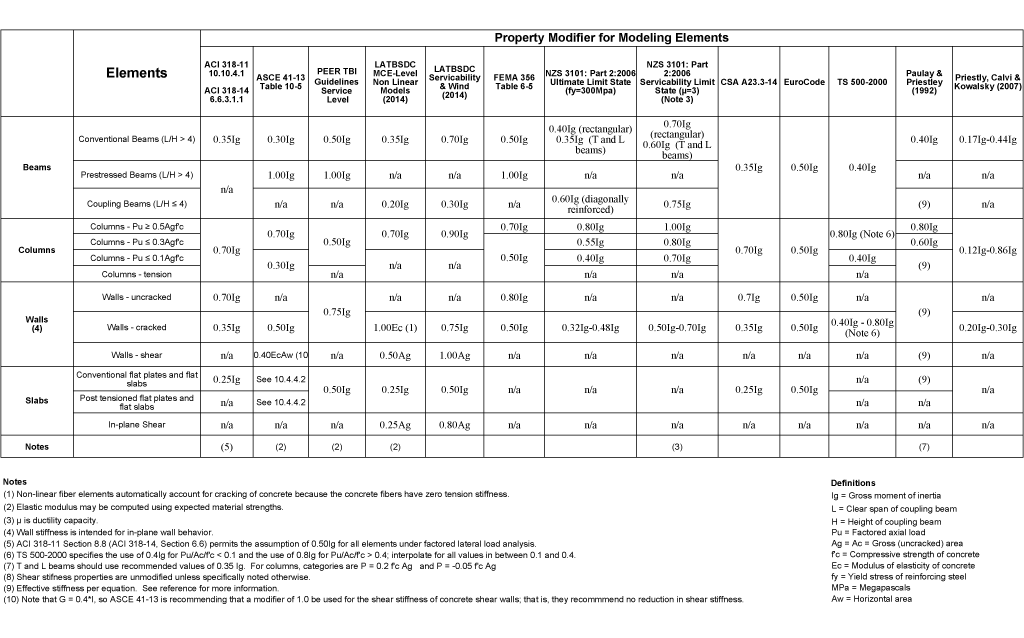They often act as primary elements of a structure s lateral stability systems and by doing so are subjected to high in plane bending forces.
Stiffness of reinforced concrete walls.
Paulay and priestley 1992 seismic design of reinforced concrete and masonry buildings.
Two large scale reinforced concrete walls without aci 318 14 special boundary elements were tested under constant axial gravity load of 0 053agfc combined with reversed cyclic quasi static.
In their discussion of stiffness modifiers for frame members they emphasize the inherent approximation in the use of stiffness modifiers.
The presence of reinforcing steel dramatically increases the overall strength characteristics of masonry or concrete.
Prediction of the seismic response and proper.
This paper studies the effective stiffness of reinforced concrete rc squat walls under lateral loads.
2 5 clear to strength steel 5 12 rather than the designed 5 10 bending strength of the section has been reduced by about 16.
Reinforced concrete rc also called reinforced cement concrete or rcc is a composite material in which concrete s relatively low tensile strength and ductility are counteracted by the inclusion of reinforcement having higher tensile strength or ductility.
Strength reduced from 136 7 to 114 9 in kips.
A reinforced wall either poured concrete or concrete block always contains some form of reinforcing steel.
Strength of reinforced concrete sections amount of rebar a s the project calls for 5 10 and 5 12 are used.
Sustainability 2020 12 4434 3 of 16 1 influence of cracks on strength 1 0 6 1 fck 250 fcd design compressive strength of concrete and compression strut angle according to 3 the value of 45 may be adopted.
Reinforced concrete walls with height to length ratios of approximately two and less are commonly used in power plant structures to resist earthquake effects.
Rc squat walls have height to length ratios less than or equal to 2.
For walls designed in.
The reinforcement is usually though not necessarily steel reinforcing bars and is usually embedded passively in the concrete before the.
The purpose of this paper is to estimate the stiffness and strength of damaged rectangular reinforced concrete shear walls after an earthquake using surface crack patterns.
They support vertical loads and are vulnerable to minor axis bending.
Design of reinforced concrete walls are in many ways like columns.
Determination of wall stiffness is of particular importance for establishing design forces on attached equipment.
Assessing the damage severity of buildings after an earthquake is an important part of the emergency inspection operation of buildings.










